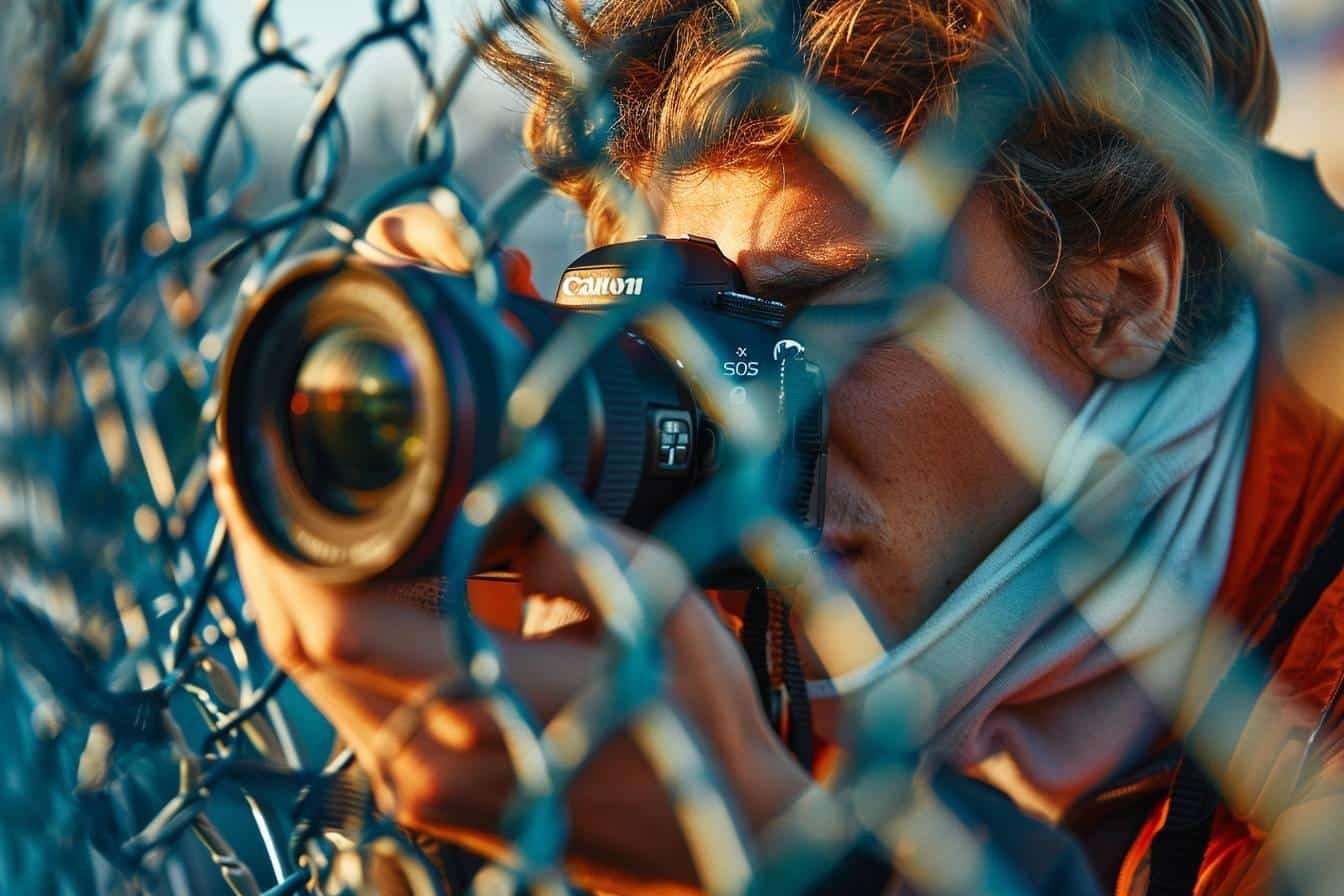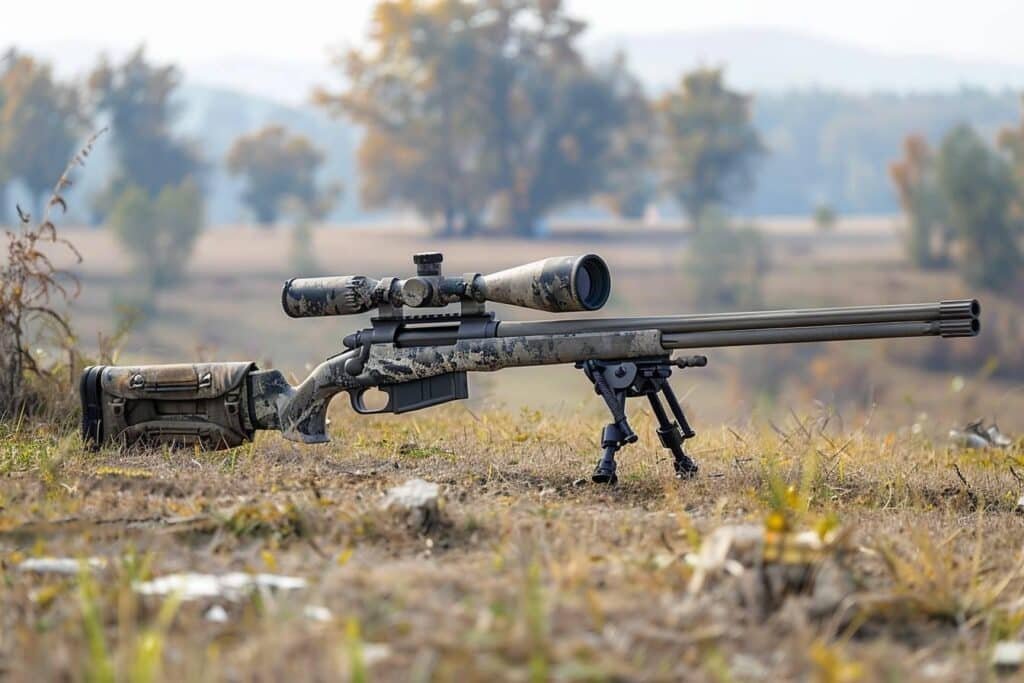The article in brief
Precision rifles are sophisticated weapons capable of hitting targets at great distances. Here are the key points to remember:
- La effective range generally varies between 800 and 2000 metres, depending on the calibre used
- Le calibrethe ammunition and weather conditions have a major influence on accuracy
- From specialised equipment like rifle scopes, increase the practical range
- La competence of the shooter remains crucial to fully exploiting the weapon's capabilities.
- From physical limits as the sound barrier and gravity constrain the maximum range
Ah, precision rifles! A subject that has fascinated me ever since I opened my gun shop a few years ago. I still remember the first time I handled one of these technological gems. What a thrill! But enough nostalgia, let's get down to the heart of the matter we're interested in today: the range of these captivating tools.
The effective range of precision rifles: between power and precision
When we talk about range of a sniper rifleWe're entering a world where every detail counts. As an enthusiast, I can tell you that the effective range of these weapons varies considerably, generally between 800 and 2000 metres. But be warned, it's not as simple as it looks!
Calibres, the kings of distance
Calibre plays a crucial role in range. Take the .50 BMG for example, a real monster capable of hitting targets up to 2000-2500 metres! Impressive, isn't it? But it's not the only high-performance calibre:
- The .338 Lapua Magnum: effective range of 1200-1600 metres, up to 2000 metres in ideal conditions
- The .300 Winchester Magnum: approximately 1200 metres effective range
- The 7.62x51mm NATO: an effective range of around 800-900 metres
Ammunition, the sinews of war
The muzzle velocity and ballistic coefficient of bullets greatly influence range. It's like choosing the right fuel for a racing car! The right ammunition can make all the difference between an accurate shot and an abject failure.
Conditions, the eternal challenge
Never underestimate the impact of the weather. Wind, temperature, humidity... All these factors can turn a seemingly simple shot into a real headache. This is where the shooter's experience comes into play.
Factors influencing maximum range
Now let's talk about the factors that can drive a precision rifle to its limits. Yes, with the right tools and in the right conditions, you can achieve great things!
Specialist equipment
Scopes and other optical equipment are true extensions of the shooter's eye. They considerably increase practical range. I've seen shooters achieve incredible feats thanks to state-of-the-art optics!
Extreme sizes
Some calibres are designed to push the limits. The .408 CheyTac or the .416 Barrett, for example, target ranges of 2000-2500 metres. These are true beasts of competition in the world of long-distance shooting.
Shooter's skills
Let's face it: even with the best equipment in the world, accuracy decreases with distance. This is where the shooter's talent and experience make all the difference. A well-trained marksman can perform miracles at distances where others give up.
| Type of shooter | Practical scope | Typical equipment |
|---|---|---|
| Special forces | 1000-1500 metres | High-precision rifles, advanced optics |
| Law enforcement | 300-600 metres | Standard rifles, quality optics |
| Sport shooter | Variable | Depends on the discipline |
It's fascinating to see how all these different factors come together to determine the effective range of a shot. It's a real art that requires patience, precision and a good dose of science!

The limits of scope: when physics gets involved
Despite our best efforts and technology, there are physical limits that cannot be ignored. Let me explain why even the best sniper rifles can't shoot far indefinitely.
The sound barrier, a natural obstacle
Going subsonic is a real challenge for long-distance shooters. Once the bullet passes below the speed of sound, its trajectory becomes much less predictable. It's like entering an invisible turbulence zone!
Gravity, the invisible enemy
The greater the distance, the more time gravity has to act on the bullet. Even the most aerodynamic projectiles eventually come under its influence. It's a constant battle between initial power and the forces of nature.
Records go further and further
Despite these challenges, record shots were fired at over 3,500 metres using specialised rifles and ammunition. It's simply breathtaking! These performances remind us that limits are made to be pushed.
Ultimately, the range of a sniper rifle is a skilful blend of technology, skill and conditions. That's what makes it so exciting! Whether you're a seasoned shooter or just curious, I hope this overview has whetted your appetite to learn more about these incredible precision machines.
To find out more, I recommend that you consult the weapons wiki. And if you come into my gunsmith's shop, don't hesitate to ask me any questions you may have. I love sharing my passion with the younger generation!



